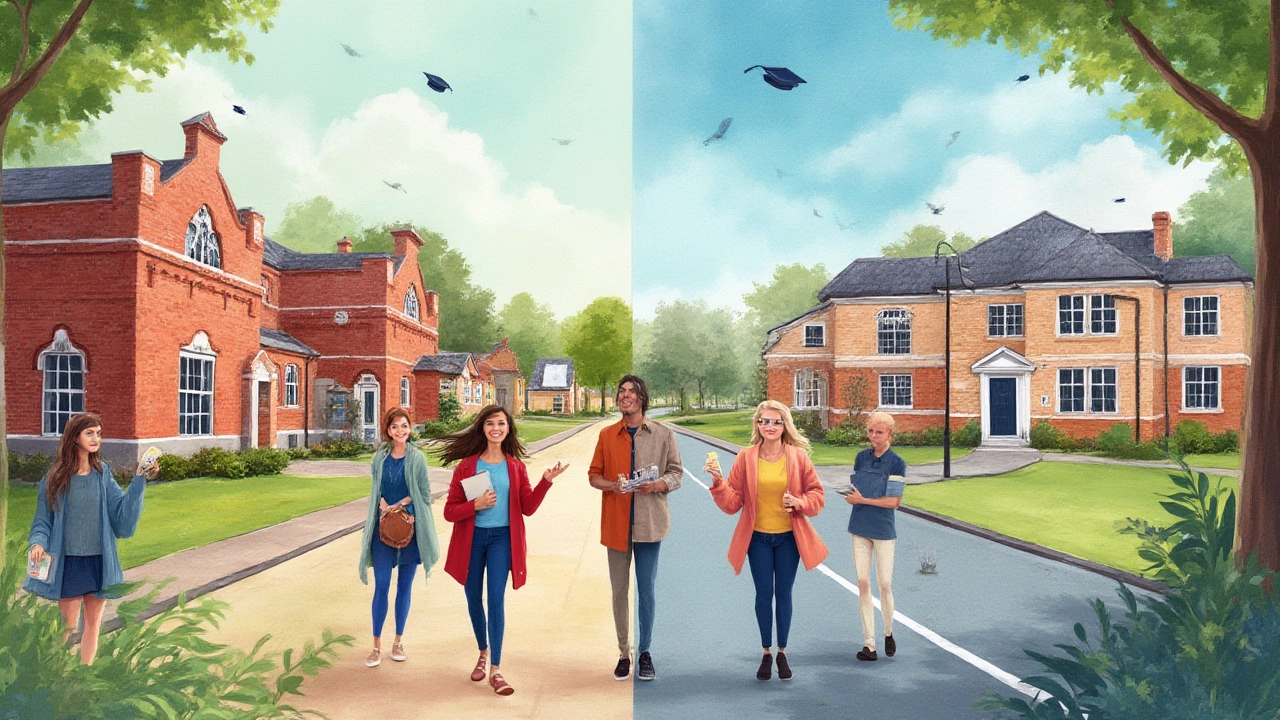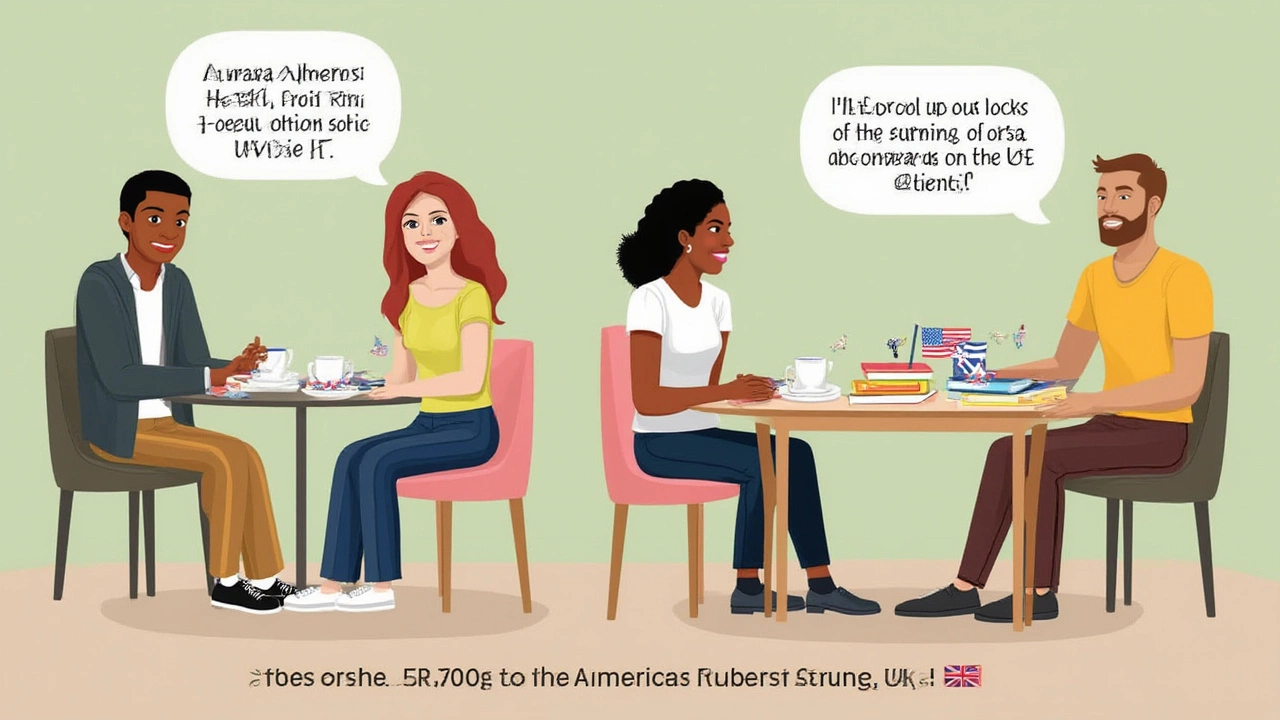Spotting the differences between school systems in the UK and the US can drive anyone a little mad. When it comes to finishing secondary school, the big question pops up: what is the American equivalent of A level? UK students know their A levels open doors—university, jobs, travel—but US teens take a different path. The confusion doesn’t stop at the fancy names, either. From course structures to how universities look at applications, things work differently across the pond. If you’re trying to figure out how the two systems line up, you’re definitely not alone. Let’s unravel the facts and find out why there’s no perfect one-to-one match—yet where you can find clear connections, all the same.
Understanding A Levels: A UK Perspective
First off, what are A levels, really? If you’ve only heard of them in passing, they’re short for Advanced Levels—academically rigorous qualifications UK students take between ages 16 and 18. After finishing their compulsory GCSEs at 16, students choose usually three (sometimes four) subjects to study in depth. It’s tough. Each subject basically becomes a mini-degree, lasting two years, drilled into detail. These aren’t like ordinary high school classes, either. Examine any A level syllabus and you’ll find the content is challenging, meant to stretch students ready for university.
UK universities see A levels as the gold standard for entry. For example, someone hoping to study medicine at a top university will need straight A grades—very unforgiving! The final grade comes mostly from big, end-of-year exams. Unlike in the US, there's little focus on coursework, extracurriculars, or how you’ve “grown as a person.” Want a fact? Each year in England, Wales, and Northern Ireland, about 300,000 students complete their A levels. A levels are recognized internationally, especially in places that inherited the British education system, like India, Singapore, and Australia—even by some US universities for advanced standing.
What Do American Students Take Instead?
Across the Atlantic, there’s no single certificate that matches A levels exactly. Instead, American teens graduate high school at about the same age (18), but their final credential is the High School Diploma. Unlike A levels, this diploma is based on continuous assessment over four years, starting at age 14 or 15. Every state sets its own graduation requirements, so there’s literally no standard national curriculum or exam. Most students take a mix of required courses (math, English, science) alongside electives (photography, business, engineering—you name it).
So, how does this compare to A levels’ laser focus on specific subjects? The High School Diploma is broader and less specialized. There's no national exam at the end. Instead, teachers set classroom assessments and grades are averaged across subjects and years. About 94% of American students graduate with a High School Diploma (according to the National Center for Education Statistics in 2023). Here’s the twist: a High School Diploma alone won’t get you into competitive American universities like Harvard or Stanford. ‘Elite’ universities expect much more.
| Qualification | Country | Age Taken | Specialization | Main Assessment |
|---|---|---|---|---|
| A Levels | UK | 16-18 | High (3-4 subjects) | National exams |
| High School Diploma | US | 14-18 | Low (broad range) | Continuous assessment |

Advanced Placement (AP) and International Baccalaureate (IB): The American ‘A Level’?
This is where things get interesting. In the US, ambitious students often take Advanced Placement (AP) courses—university-level classes offered during high school. There are over 30 AP subjects, ranging from Calculus to Art History. At the end of each AP course, students can sit AP exams. Top scores (a 5 is the best) can sometimes count for university credit—at both American universities and international ones. Last year, 2.8 million US students took at least one AP exam, according to the College Board.
So is AP the American A level? It’s the closest. Both are subject-specific, tough, and valued by university admissions. The key difference: APs are optional, and students can dip in and out—maybe just a single AP class, or as many as a dozen. There’s no requirement to pick a set number. Plus, AP classes aren’t evenly available in every school. Some state schools in the US don’t offer AP at all, making it tricky to compare nationwide. Another advanced option, the International Baccalaureate (IB), runs in some US schools too. It’s a global program, more like the European model, and involves exams plus coursework in six subject groups, alongside a “Theory of Knowledge” class and community work. IB students usually take on more homework, more projects, and have to juggle all subjects at once—unlike A level students, who can really dig deep into their chosen subjects.
For university admissions, AP and IB scores look impressive. Ivy League schools expect students to have pursued the toughest courses available at their high schools. But here’s a tip: if you’re applying to a US university from the UK (with A levels), it helps to show top results in challenging subjects, since that signals the same ambition as loading up on APs. If you’re a US student eyeing UK universities, admissions panels usually look for at least three top-scoring AP subjects or a full IB Diploma to match A level standards.
Admissions: How Do Universities Read Your Results?
Here’s something that catches people out: British and American universities read qualifications differently. In the UK, your top three A level results are almost all that matter—you get an offer for a course (say, BBC at A-level for English Lit), and if you meet it, you’re in. No ‘holistic review.’ No personal essays about your struggles at summer camp.
American universities, though, look at the bigger picture. They consider high school grades (GPA), AP or IB scores, SAT or ACT (standardized tests, though these are now optional at a lot of schools), plus recommendation letters, essays, and your extracurriculars. Nobody in the US expects everyone to have done the same courses or exams. Score badly in maths but ace the school orchestra? That might help you get in. For international students applying to the US, universities will usually ask for evidence your studies match their ‘college-ready’ level. For example, Cambridge University in the UK tells American applicants they’ll need five or more AP scores at grade 5, or full IB, alongside high GPAs. Colleges want proof you can handle challenging work, however your school calls it.
It works the other way, too. If a US student wants to study in the UK, for many universities, the High School Diploma itself isn’t usually enough—UK universities will expect proof of excellence in several AP subjects, or the full IB Diploma, to equate with A level depth.

Tips If You’re Crossing Systems (and A Few Shockers)
Thinking about study in America with your A levels? Or maybe flipping the script, using US APs to apply for a British uni? The messy truth is, both sides recognize the other’s qualifications—but there’s homework involved. Here’s what actually matters:
- If you have A levels, check the 'entry requirements' for each US college. Many top universities grant substantial credits for A levels—sometimes letting you skip first-year classes, or even finish university early (saving big money on tuition fees). For example, University of California schools often recognize A-level results for both admission and credits.
- If you’re an American with a High School Diploma and some APs, you’ll mostly need at least three AP scores at 5 for entry into selective UK universities. Some British schools *require* five strong APs. The full IB Diploma is usually seen as even more valuable, matching the European style of study.
- Show your full range. Admissions everywhere love students who challenge themselves. Stuck at a school that offers zero APs? Write clearly to universities, explain your situation, and highlight everything else you’ve done to show academic drive.
- Beware, American qualifications vary wildly by state and by school. There’s no central exam authority in the US. Always double-check if your APs, SATs, or IB courses fit the entry criteria for your target universities—a quick email to an admissions office can make all the difference.
Here’s a fun fact often missed: while the British A level is fiercely specialized, it leaves some UK students with big knowledge gaps if they later switch university courses. American programs, although more sprawling, offer a safety net—you can shift your major halfway! Each system has blind spots, but both have produced Nobel Prize winners, tech startup founders, and astronauts. The key isn’t which is better—it’s about which one lines up best with your next steps in life.
So, while there isn’t a single American equivalent of A level, the closest matches are AP or IB courses, ideally stacked on top of a strong High School Diploma. If there’s a headline to remember: American equivalent of A level means blending challenging AP or IB results with your full high school record. Watch out for the details, and don’t be afraid to ask admissions staff lots of questions—even the experts trip up now and then.
